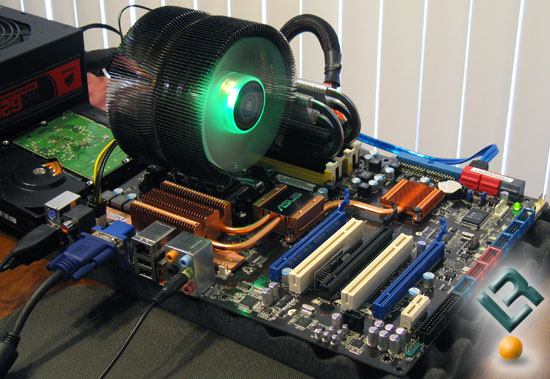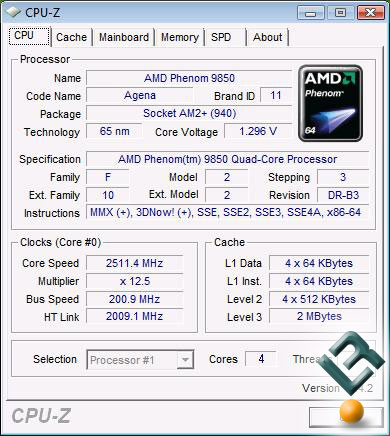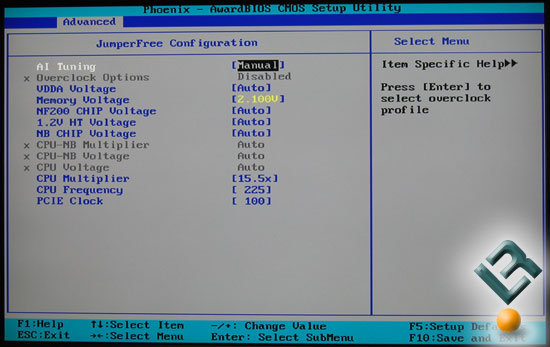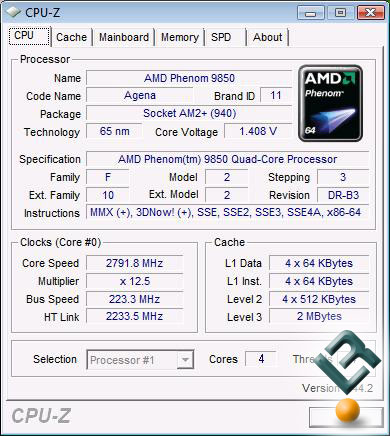CPU Overclocking
Overclocking greatly varies due to what hardware is being used and who is doing the overclocking. Always remember that no two pieces of hardware will perform the same, so our results will differ from what you might be able to get. Overclocking may lead to system instability, crashes and loss of data, and could even destroy components if not carried on with care. However, if overclocking is performed attentively it indeed increases overall system performance.

For overclocking we figured it would be more fun to use an AMD Phenom 9850 quad-core processor than the AMD Athlon X2 4850 dual-core processor that we used for the benchmarking. It should be noted that the $66 Zalman CNPS9700 NT CPU Cooler was used for improved CPU cooling as the Phenom 9850 is a 125W processor.

With stock BIOS settings, the AMD Phenom 9850 processor runs with a 200MHz bus speed and has a 12.5 multiplier that are used to reach the final core clock of 2.50GHz. As you can see above, the ASUS M3N-HT Deluxe motherboard runs at 200.9MHz, so the clock frequency is just 1Mhz higher than it should be.

The ASUS M3N-HT Deluxe motherboard BIOS was very simple to use, but we did encounter some issues during overclocking on the AMD Phenom X4 9850 processor. It seems the overclocking options were disabled in the BIOS with no way to enable them. The CPU Voltage and a couple of other North Bridge settings were also unable to be set. The CPU multiplier was able to be adjusted, but they wouldn't take. We would set the BIOS to a CPU Multiplier of 15.5 and when Windows loaded up it was still at 12.5. It seems the BIOS still has some perfecting to be done by ASUS and NVIDIA. Since we couldn't adjust the multiplier, we adjusted just the CPU bus speed to find the highest frequency we could hit.

The Phenom 9850 acts just like the older B1 and B1 stepping Phenoms and usually tops out at just over 220MHz on the bus. A stable overclock using a bus speed of at least 225 MHz on the AMD Phenom 9850 2.5 GHz CPU was achieved. CPU-Z was reporting the bus speed as 223.3MHz, even though it was set to 225MHz in the BIOS. At 223.3MHz x 12.5 the final frequency of the processor was 2.79GHz, which is 290MHz over the stock frequency of 2.50GHz. This is what we have seen on other chipsets for Phenom processors, so NVIDIA has done a great job with keeping the 780a even with the competition when it comes to overclocking.


